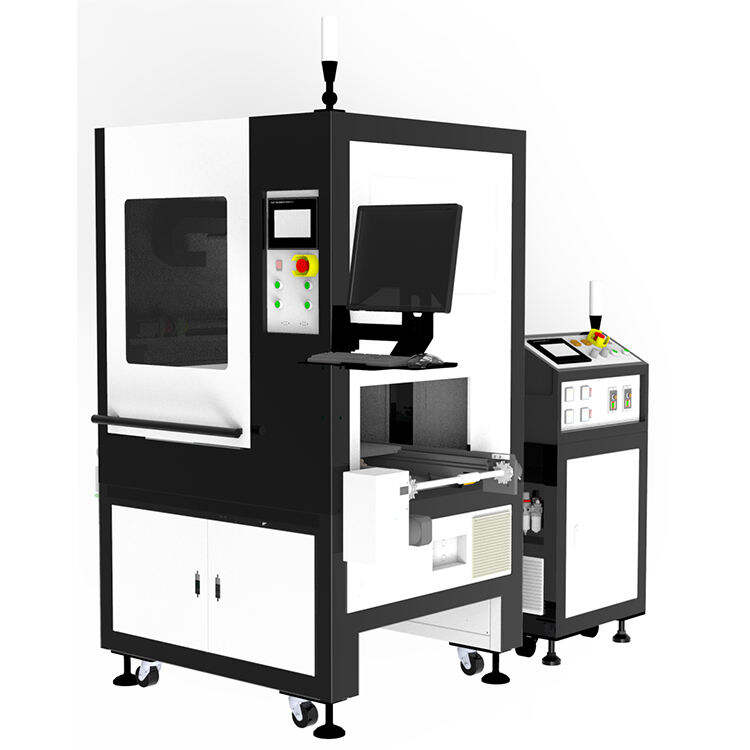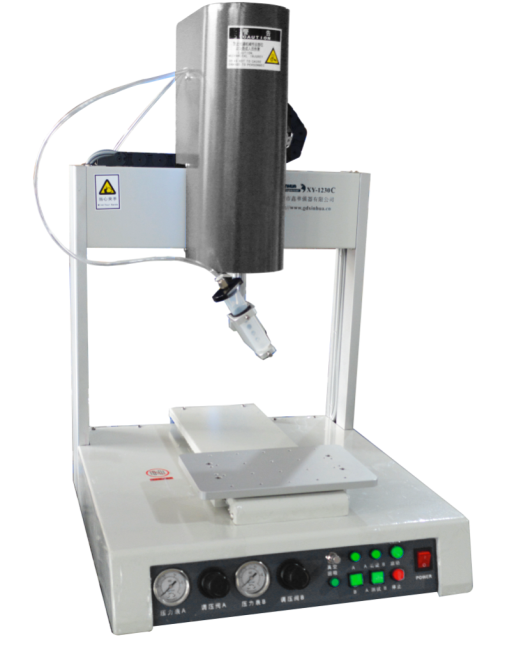 ×
×
To optimize glue filling automation, it's crucial to understand current production rates and future scaling potential. Industry benchmarks can help establish realistic output objectives, ensuring the machinery meets growing demands efficiently. Various studies have shown that adjusting speeds can significantly improve operational efficiency and reduce costs. Analyzing such market data reveals optimal rates that prevent bottlenecks and maximize throughput. Moreover, production demands impact machine selection, underscoring the importance of automated cycles and minimizing downtime to maintain continuous operations.
Selecting appropriate machinery for different adhesive viscosities is vital for efficient production. Understanding fluid dynamics principles allows manufacturers to choose machines that effectively handle varying viscosities. When dealing with low viscosity adhesives, certain machine technologies perform better, as evidenced by literature on material performance. Conversely, high viscosity adhesives require different technological solutions for optimal function. Testing protocols are essential for viscosity adjustments during production, ensuring machines are properly calibrated to handle various glue types seamlessly.
Industries such as packaging and automotive greatly benefit from double glue applicator systems. Case studies highlight how these systems enhance processes by providing multi-material bonding solutions and increasing adhesive spread, leading to efficiency improvements. The flexibility of double systems in adapting to diverse production environments is another advantage. They can accommodate unique bonding requirements, making them suitable for specialized industrial applications where precision and performance are paramount.
Precision mixing technology has revolutionized the way glues are mixed, significantly reducing air bubbles and enhancing product quality and consistency. These technological innovations allow for controlled blending of adhesives, which minimizes disruptions on application surfaces. Studies have demonstrated that using precision mixing methods can enhance output by maintaining optimal mixing conditions, which are crucial for ensuring that the adhesive coat is uniform and durable. Users of advanced mixing technology, like [Bosch Packaging Technology](https://www.boschpackaging.com), have reported considerable improvements in product consistency and reduced material wastage, corroborating the efficacy of these systems.
The integration of robot arms in 4-axis dispensing systems has markedly improved automation in glue dispensing operations. These systems bring a significant enhancement in precision, reducing labor costs and minimizing errors during glue application. The engineering of these 4-axis robot arms offers outstanding advantages, such as multi-directional application capabilities, ensuring that the glue is applied according to precise specifications. Industries such as packaging and automotive manufacturing have adopted robotic systems, reporting enhanced efficiency and production metrics. By increasing automation, these robotic arms help meet the high demands for accuracy and speed in modern production lines.
Maintaining precise temperature control is crucial for effective hot glue application, especially in managing adhesive viscosity. This precision influences drying time and the adhesive strength, making temperature regulation an essential factor in glue filling systems. Research in adhesive science highlights that consistent temperature control not only affects the bonding strength but also prevents degradation of the adhesive during application. Advanced glue dispensing machines are designed with specific features that enable effective monitoring and management of temperature, which ensures a consistent quality in adhesive application and contributes to the longevity and reliability of the finished product.
Cycle time is a critical parameter in manufacturing processes, directly affecting overall production throughput. It refers to the time required to complete one cycle of an operation, from start to finish. Optimizing cycle time can significantly increase the annual production output, enhancing manufacturing efficiency. According to industry standards, even a slight reduction in cycle time can lead to substantial gains in productivity. For example, reducing the cycle time by just 10% could potentially boost annual output by up to 25%, highlighting the importance of fine-tuning this metric.
When cycle time optimization is overlooked, real-world manufacturing environments may experience decreased productivity and increased operational costs. Several case studies have shown that manufacturers who focus on cycle time improvements often report fewer bottlenecks in their production processes and a smoother workflow. Conversely, those neglecting this optimization may face missed deadlines and increased labor expenses, demonstrating the impact of cycle time on financial and operational performance. Therefore, implementing strategies to minimize cycle time is essential for any competitive manufacturing entity.
The compatibility of glue ratios is pivotal in diverse production processes, especially in industries like pharmaceuticals and construction, where precise formulations are crucial. Machines that can handle varying glue ratios from 1:1 to 100:1 offer significant flexibility. This compatibility allows manufacturers to maintain consistency and quality while adapting to different adhesive formulations. In pharmaceutical applications, for example, ensuring the correct glue ratio is vital for product efficacy and safety.
However, transitioning to machines that accommodate various glue ratios poses integration challenges. These challenges, often highlighted in user case studies, include initial calibration difficulties and the steep learning curve for operators accustomed to less versatile systems. To address these issues, manufacturers have developed innovative solutions, such as automatic ratio adjustment and enhanced user interfaces, to streamline the adaptation process and make it less cumbersome. These advancements ensure that even as glue formulations become increasingly complex, production processes remain efficient and error-free.
The AUTOMATIC DOUBLE LIQUID VACUUM GLUE FILLING MACHINE employs advanced vacuum technology to ensure high precision in glue application, minimizing bubble content. This technology is particularly effective for double liquid systems, which are designed to significantly reduce glue waste and ensure consistent application. Industry feedback has highlighted the machine's capability to deliver a bubble-free finish, enhancing the quality of the final product. In terms of potential ROI, manufacturers across various sectors can expect substantial operational savings as the machine streamlines processes and increases production efficiency. For instance, by reducing the incidence of defects due to bubbles, companies can achieve better product consistency and lower the costs associated with rework and waste.

The ON LINE DOUBLE LIQUID GLUE FILLING MACHINE is engineered for seamless integration into assembly lines, enhancing operational efficiency with its precise double liquid dispensing capabilities. By utilizing high-speed systems to mix and dispense glue directly onto products, manufacturers can achieve faster production rates and greater consistency in output. Successful case studies have illustrated how these systems can drastically reduce downtime and improve throughput in industrial settings by maintaining uniform glue application rates. Additionally, user-friendly features such as customizable dispensing ratios and easy-to-use interfaces make it accessible for operators to manage and configure the machine, ensuring it runs at optimal settings for various applications.

The 4AXIS AUTO-GLUE DISPENSING MACHINE WITH Z AXIS ROTATING introduces a new level of flexibility for production lines, facilitated by its multi-angle applications. This innovation is supported by the machine's capability to rotate on the Z-axis, offering versatility in glue application which enhances product quality and labor efficiency. By leveraging technological advancements in robotics, manufacturers can achieve precise dispensing from various angles, accommodating complex product shapes and designs. This adaptability not only improves the final product but also optimizes labor costs as the machine can adapt to different tasks without manual adjustment. Such advancements ensure that businesses maintain a competitive edge through enhanced manufacturing agility.
